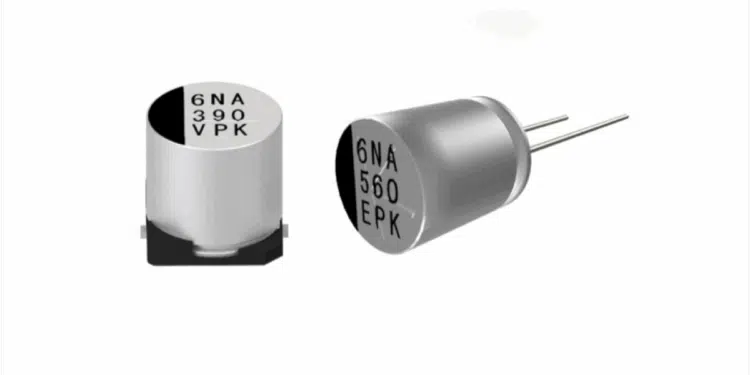Rubycon has previously marketed hybrid-type conductive polymer aluminum solid electrolytic capacitors, and has played a key role in realizing smaller, higher performance, and longer life for equipment that requires high reliability, primarily for the automotive, communications, social infrastructure, and industrial equipment markets.
However, as sets become smaller and more densely packed, capacitors are required to have higher capacitance, smaller size, and more stable product performance under severe environmental conditions.
Rubycon have recently added 50 and 63V products to our compact, high capacity PKV (chip type)/PZK (radial lead type) series. Furthermore, we have expanded the sizes of the chip type to φ10×12.5L-16L, and the lead type to φ10×11L-20L.
This expansion will broaden the range of applications of the PKV/PZK series to AI servers, social infrastructure such as communication base stations, in-vehicle equipment, industrial equipment, and more, greatly contributing to improving the performance of equipment.
Our Conductive Polymer Aluminum Solid Electrolytic Capacitors (Hybrid type) have realized high performance characteristics such as high heat resistance, high ripple current, long life, low ESR, and excellent temperature characteristics by combining conductive polymer and originally developed functional liquid.
The PKV series (chip type) / PZK series (radial lead type) maintained its high performance while aiming for higher capacity, and was marketed in 25, 35V products in 8×10.5/8×9, 10×10.5/10×9 sizes.
This time, we have expanded the voltage to 63V by optimizing the manufacturing conditions and designing the high-magnification electrode foil and low-density electrolytic paper used in the PKV series/PZK series of 35V or less to withstand high voltage.
Furthermore, with our own in-house developed high-performance manufacturing equipment, we are the only company in the industry to have established production technology for hybrid types up to 20L. By adding 20L products to the PZK series lineup, in the case of 25V, the hybrid type can now cover up to 1,500μF, whereas conventional products (PJV/PZJ series) were limited to 820μF.































